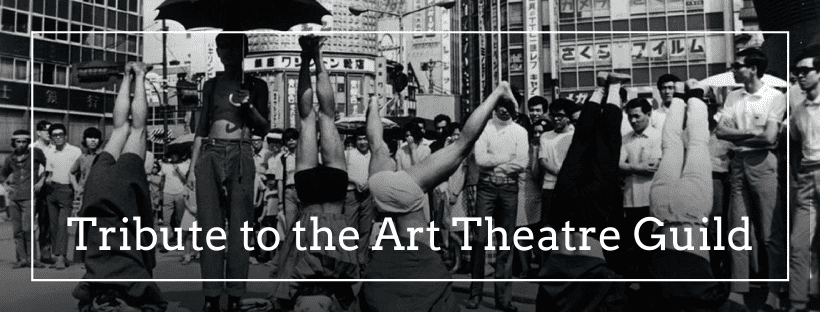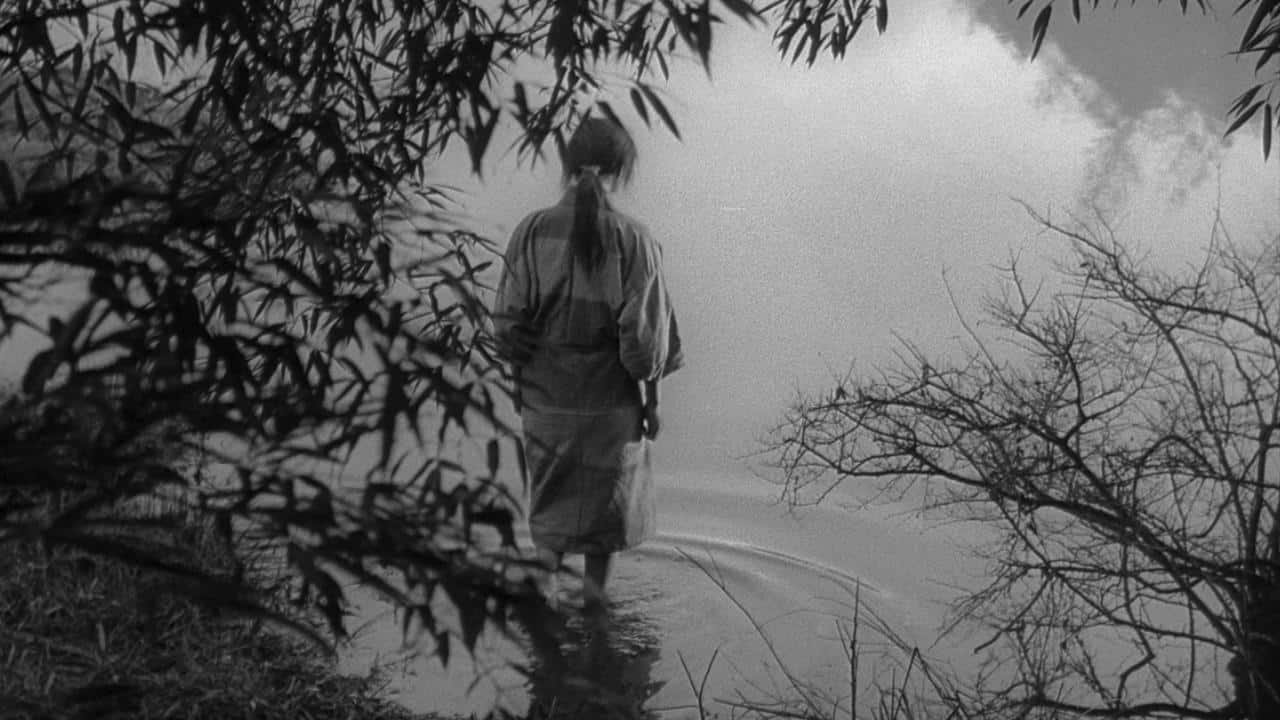Nishijin is a district in Kyoto famous for “Nishijin-ori”, an ultra-expensive fabric produced with traditional means. Yoichi Takabayashi takes the folk story standard of the double suicide (between a prostitute and a poor worker) and places it in the particular setting in the 70s in “Double Suicide at Nishijin”, in an approach though, that could easily take place in the 1700s, when the original double suicide story was first presented.
Yumi is a very beautiful young girl, who, as the story begins, is running away from her lover in Osaka, who has just been bankrupted, and wants to commit a double suicide with her. After the investigation, a kind-hearted, middle aged policeman, Amano, gives her money to return to her mother in Fukushima. She, however, takes the money and decides to stay in Osaka, eventually deciding to become an apprentice in a Nishijin-ori small entrepreneurship. However, as they do not take her on, she ends up in an escort service, which, inevitably, also involves prostitution, although in a hush-hush way. Eventually, she stumbles on Amano once more, who, this time, helps her get the apprenticeship as her guarantor, and the dream of the girl finally comes true.
While there, however, she realizes the interplay in the small business, as the true boss, Toyo, is lusting for both her and the talented young weaver Yoshida. Furthermore, her effort to hide her past ends up in failure quite quickly when a client recognizes her from her previous line of work, while her boss wants to marry her to another rich client. As Yoshida has feelings for her, Yumi decides to use her body to get what she wants, transforming into a femme fatale.
As mentioned before, one of the most impressive aspects of Yoichi Takabayashi's work is the fact that the story, despite taking place in the 70s, could easily be a period one, in an approach that probably aims to show how, despite technological progress, some things, and particularly the place of women and the poor in the society, remain the same. The textile business, the relationship of the two, even the dresses Yumi wears, sometimes kimonos, sometimes western/modern ones all point towards the same direction, in a truly impressive feat.
Double Suicide at Nishijin (1977) [Trailer] from Art Theatre Guild on Vimeo.
The other quite intriguing element here is the character of Yumi, which is as enigmatic and ambiguous as any individual could be. Alternating between victim and femme fatale a number of times, it seems that she knows what she needs to do in order to get what she wants, that is using her sexuality in any way possible, but is not particularly keen to do so, unless she finds herself in a corner. The fact that every time she tries to change for the better finds her past, and her overall social and financial status being an obstacle justifies her behavior to a point. At the same time though, a number of times she goes too far, with her interactions with Amano and the violent spree that takes place during the finale highlighting this aspect to the highest degree.
Yoshie Shimamura gives a great performance in a rather difficult role that also has her appearing in a number of erotic scenes, although without much nudity. The way she manages to communicate the aforementioned ambiguity is one of the movie's best traits. The film's second great performance comes also from a woman, Yoko Mihara, who, as the lustful, calculating boss Toyo, seems to portray the ideal path Yumi's initial behavior could have led her to. Her character is also the main source of humor in the movie, with the repeated massage session sequence being the funniest in the movie. The fact that the men in the story all seem to be micromanaged by these two women also adds to their characters and performances, through a somewhat ‘girl power” approach that has the overwhelming majority of them appearing as sex crazed, drunken buffoons or kind-hearted simpletons. Yoshio Tsuchiya as Yoshida gives the most intriguing performance among the male actors, with him highlighting his victimization quite eloquently, while his appearance as one of the central characters of the movie after a point, definitely elevates the quality of the whole thing.
Check also this interview
Yoichi Takabayashi's cinematography captures the aforementioned period/modern approach of the movie with gusto, with his images being impressive frequently, particularly in the presentation of the fabrics produced and the clothes the women wear. His approach, apart from this, aims mostly at realism, while the presentation of the erotic scenes lingers somewhere between the sensual and the artful, mostly through intense close ups. Yukio Kimura's editing results in a relatively fast pace that suits the episodic approach of the narrative nicely, while adding to the entertainment the movie offers.
At times, as seems to be one of the issues ATG productions faced during the second decade of its existence, Takabayashi seems not to be sure where he wanted to go, lingering between the erotic, the drama, and the period movie in a way that is definitely uneven. At the same time, though, “Double Suicide at Nishijin” is well shot, manages to stay entertaining from beginning to end, and presents its comments rather eloquently, in a mixture that makes it easy to watch even today.
















